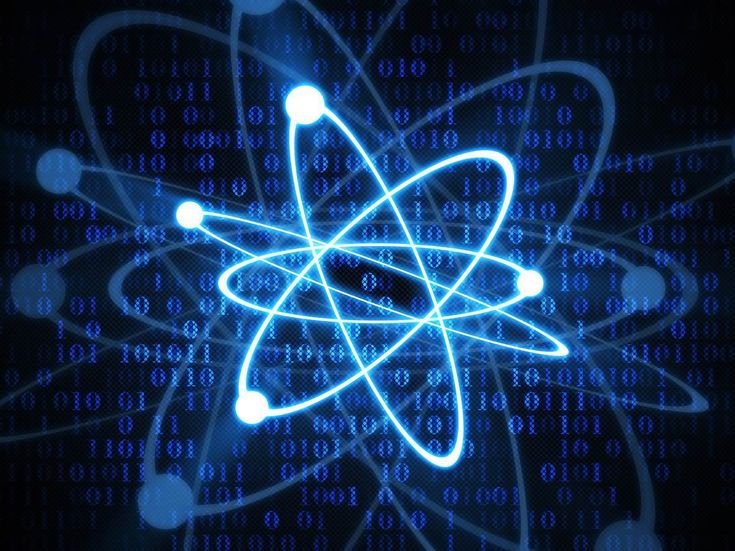
Natural disasters, including earthquakes, hurricanes, floods, and wildfires, pose significant risks to human life, property, and infrastructure. Predicting these events accurately and timely is crucial for mitigating their impact and ensuring public safety. Artificial intelligence (AI) has emerged as a powerful tool in the prediction and management of natural disasters. By analyzing vast amounts of data and identifying patterns, AI can enhance the accuracy of forecasts, improve early warning systems, and support disaster response efforts. This article explores the role of AI in predicting natural disasters, its benefits, applications, challenges, and future prospects.
The Role of AI in Predicting Natural Disasters
AI leverages advanced algorithms, machine learning, and data analytics to analyze complex datasets and predict natural disasters. The ability to process and analyze large volumes of data quickly and accurately enables AI systems to identify early warning signs of impending disasters. By integrating data from various sources, such as satellite imagery, weather stations, and geological sensors, AI can provide more accurate and timely predictions than traditional methods.
Benefits of AI in Predicting Natural Disasters
Improved Accuracy and Timeliness
AI can analyze data from multiple sources, identify patterns, and make predictions with high accuracy. Machine learning algorithms can detect subtle changes in environmental conditions that may indicate an impending disaster. For example, AI can analyze seismic data to predict earthquakes or monitor ocean temperatures and atmospheric conditions to forecast hurricanes. The ability to provide timely and accurate predictions can help authorities take preventive measures and reduce the impact of natural disasters.
Early Warning and Preparedness
AI-powered systems can enhance early warning systems by providing real-time alerts and updates. By continuously monitoring environmental data, AI can detect anomalies and trigger alerts for potential natural disasters. Early warning allows authorities to evacuate vulnerable areas, prepare emergency response teams, and mobilize resources. This proactive approach can save lives and minimize damage to property and infrastructure.
Data Integration and Analysis
Natural disasters are complex events influenced by various factors, including weather patterns, geological activity, and human activities. AI can integrate data from diverse sources, including satellite imagery, social media, and IoT sensors, to provide a comprehensive understanding of the situation. This holistic view enables more accurate predictions and better decision-making during disaster response and recovery.
Resource Optimization
AI can optimize the allocation of resources during and after a natural disaster. By analyzing data on affected areas, population density, and infrastructure, AI can help prioritize the deployment of emergency services, medical aid, and relief supplies. This targeted approach ensures that resources are used efficiently and reach those in need quickly.
Enhanced Communication and Public Awareness
AI can support communication and public awareness efforts during natural disasters. AI-powered chatbots and virtual assistants can provide real-time information and answer questions from the public. Additionally, AI can analyze social media data to understand public sentiment and disseminate accurate information. This helps prevent misinformation and ensures that people receive timely and reliable updates.
Applications of AI in Predicting Natural Disasters
Earthquake Prediction
Predicting earthquakes is challenging due to the complexity of seismic activity. However, AI has shown promise in improving earthquake prediction accuracy. Machine learning algorithms can analyze seismic data, including ground vibrations and fault movements, to identify patterns that may precede an earthquake. AI can also analyze historical data and geological information to assess the likelihood of future seismic events.
Hurricane and Cyclone Forecasting
Hurricanes and cyclones are among the most destructive natural disasters. AI can enhance hurricane forecasting by analyzing data on sea surface temperatures, wind patterns, and atmospheric pressure. Machine learning models can predict the path, intensity, and potential impact of hurricanes, allowing for better preparation and response. AI can also improve the accuracy of storm surge predictions, helping coastal communities prepare for flooding.
Flood Prediction and Management
Floods can result from various factors, including heavy rainfall, snowmelt, and dam failures. AI can improve flood prediction by analyzing data on precipitation, river flow, soil moisture, and topography. Machine learning algorithms can model the complex interactions between these factors and predict the likelihood and severity of floods. AI can also support flood management efforts by identifying vulnerable areas and optimizing evacuation plans.
Wildfire Detection and Prediction
Wildfires can spread rapidly and cause widespread devastation. AI can play a crucial role in wildfire detection and prediction. Machine learning algorithms can analyze satellite imagery, weather data, and vegetation conditions to identify areas at high risk of wildfires. AI-powered systems can also detect smoke and fire signatures in real-time, enabling early intervention and containment efforts.
Tsunami Prediction
Tsunamis are triggered by underwater earthquakes, volcanic eruptions, or landslides. AI can enhance tsunami prediction by analyzing seismic data, oceanographic measurements, and underwater topography. Machine learning models can predict the likelihood of a tsunami following an underwater event and estimate the potential impact on coastal areas. AI can also support early warning systems by providing real-time alerts to affected regions.
Challenges in AI for Predicting Natural Disasters
Data Quality and Availability
The accuracy of AI predictions depends on the quality and availability of data. In many regions, data on natural disasters may be limited or unreliable. Additionally, natural disasters can occur in remote or underdeveloped areas where data collection infrastructure is lacking. Ensuring access to high-quality, real-time data is crucial for improving AI predictions.
Complexity and Uncertainty
Natural disasters are inherently complex and influenced by numerous factors, making accurate prediction challenging. AI models must account for various uncertainties, including changes in environmental conditions, human activities, and technological limitations. While AI can improve prediction accuracy, it cannot eliminate uncertainty entirely. It is essential to communicate the limitations of AI predictions to stakeholders and the public.
Ethical and Social Considerations
The use of AI in predicting natural disasters raises ethical and social considerations. For example, AI-powered surveillance systems used for monitoring disaster-prone areas may infringe on privacy rights. Additionally, the implementation of AI systems may disproportionately benefit regions with advanced technology infrastructure, potentially exacerbating existing inequalities. Addressing these ethical and social concerns is critical for the responsible use of AI in disaster prediction.
Integration and Collaboration
Effective disaster prediction and response require collaboration between various stakeholders, including governments, research institutions, and private companies. Integrating AI systems into existing disaster management frameworks can be challenging due to differences in technology standards, data formats, and organizational structures. Promoting collaboration and standardization is essential for leveraging AI’s full potential in disaster prediction.
The Future of AI in Predicting Natural Disasters
The future of AI in predicting natural disasters is promising, with ongoing advancements in AI technologies and data analytics. As AI algorithms become more sophisticated and capable, they will provide more accurate and timely predictions, improving disaster preparedness and response.
Integration with Emerging Technologies
The integration of AI with emerging technologies, such as IoT, big data, and blockchain, will enhance disaster prediction capabilities. IoT sensors can provide real-time data on environmental conditions, while big data analytics can process large volumes of information from diverse sources. Blockchain can support secure and transparent data sharing, ensuring the integrity of disaster-related information.
AI-Powered Decision Support Systems
AI-powered decision support systems will play a crucial role in disaster management. These systems can provide actionable insights and recommendations to decision-makers, helping them prioritize actions and allocate resources. For example, AI can recommend evacuation routes, identify critical infrastructure at risk, and optimize emergency response strategies.
Global Collaboration and Data Sharing
Global collaboration and data sharing are essential for improving AI’s effectiveness in predicting natural disasters. International cooperation can facilitate the exchange of data, research, and best practices, enabling countries to learn from each other’s experiences. Additionally, open data initiatives can provide researchers and AI developers with access to valuable datasets, fostering innovation and improving prediction accuracy.
Public Engagement and Education
Engaging the public and raising awareness about AI’s role in predicting natural disasters is crucial for building trust and ensuring the effective use of AI technologies. Public education campaigns can inform communities about the capabilities and limitations of AI systems, helping them understand and respond to disaster predictions. Additionally, involving the public in data collection and monitoring efforts can enhance community resilience and preparedness.
Conclusion
AI is a powerful tool for predicting natural disasters, offering the potential to improve accuracy, timeliness, and response efforts. By analyzing vast amounts of data and identifying patterns, AI can provide early warnings and support decision-making during disaster events. However, challenges related to data quality, complexity, ethical considerations, and collaboration must be addressed to fully realize AI’s potential in this field.
The future of AI in predicting natural disasters is bright, with continued advancements in technology and data analytics. The integration of AI with emerging technologies, global collaboration, and public engagement will further enhance disaster prediction capabilities. By leveraging AI’s strengths, we can build more resilient communities, reduce the impact of natural disasters, and save lives.
ALSO READ: The Importance of Cybersecurity in Critical Infrastructure









